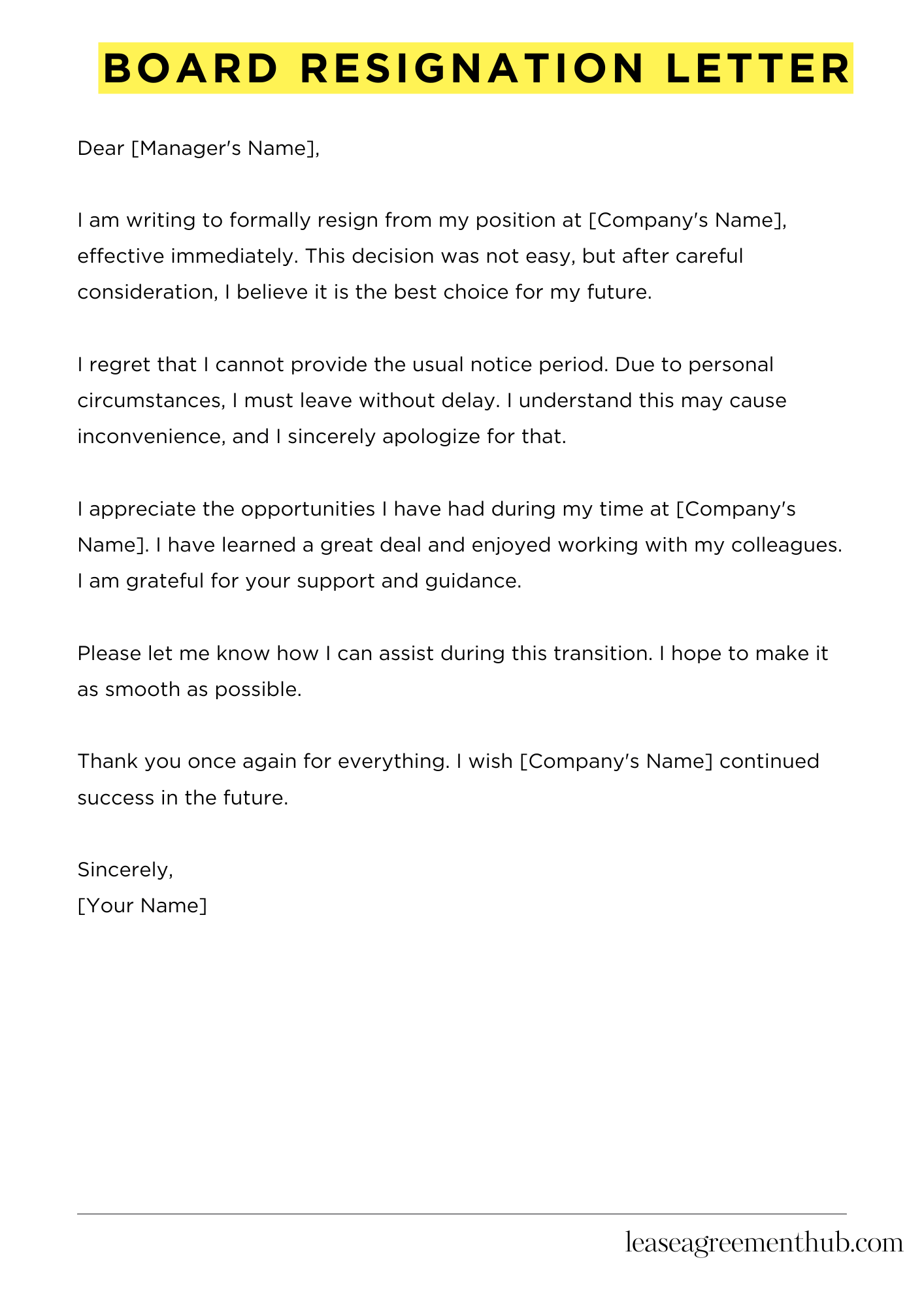A board resignation letter is a formal document submitted by a board member to the board of directors, expressing their intention to resign from their position. It is typically used to communicate the member’s decision to step down and provide reasons for their departure.
In this article, we will provide you with a collection of board resignation letter templates, examples, and samples. These resources will help you draft a professional and effective letter that clearly conveys your decision and reasons for resigning. By using these templates, you can save time and ensure that your letter meets the necessary standards and requirements.
Board Resignation Letter
[Your Name]
[Your Address]
[City, State, Zip Code]
[Email Address]
[Phone Number]
[Date]
[Recipient Name]
[Organization Name]
[Organization Address]
[City, State, Zip Code]
Dear [Recipient Name],
I am writing to formally resign from my position on the board of [Organization Name], effective [Last Working Day, e.g., two weeks from the date above].
This decision was not easy for me. I have enjoyed being part of this board and contributing to our goals. However, due to personal commitments, I must step down at this time.
I want to express my gratitude for the opportunities I have had while serving. I have learned a great deal and have appreciated the support and collaboration of my fellow board members.
I am committed to ensuring a smooth transition. I will gladly assist in any way possible during this period. Please let me know how I can help.
Thank you once again for the chance to be part of [Organization Name]. I wish the board and the organization continued success in the future.
Sincerely,
[Your Name]

How to Write Board Resignation Letter
Understanding the Importance of a Resignation Letter
A board resignation letter is a formal way to communicate your decision to step down from a board position. It is essential to maintain professionalism and respect in your communication. This letter serves not only as a notification but also as a record of your resignation. It can help ensure a smooth transition for both you and the organization.
Key Elements to Include
When writing a resignation letter, there are several critical components to consider. First, start with a clear statement of resignation. Include your name, position, and the date. Next, express gratitude for the opportunities you had while serving on the board. Mention specific experiences or lessons learned. Finally, offer assistance during the transition period. This shows your commitment to the organization even as you leave.
Choosing the Right Tone
The tone of your letter should be respectful and professional. Avoid using negative language or expressing dissatisfaction. Instead, focus on the positive aspects of your experience. A gracious tone can help preserve relationships and maintain your reputation. Remember, this letter may be read by future employers or colleagues, so it’s crucial to leave a good impression.
Formatting Your Letter
Formatting is vital for clarity and professionalism. Start with your contact information at the top, followed by the date, and then the board’s contact information. Use a formal greeting, such as “Dear [Board Chair’s Name].” Keep your letter concise, ideally one page. Use paragraphs to separate different ideas, making it easier to read. Finally, close with a polite sign-off, such as “Sincerely,” followed by your signature and printed name.
Final Tips for Writing Your Resignation Letter
Before sending your resignation letter, proofread it for any errors. A well-written letter reflects your attention to detail. Consider discussing your resignation with the board chair or other members before submitting the letter. This can help manage expectations and demonstrate your professionalism. Lastly, ensure that you send the letter via the appropriate channels, whether by email or traditional mail, according to the organization’s policies.
Related: